Understanding Petra
Burckhardt's Journal describes the discovery of Petra. This ancient ruin is a feature for mature and senior travellers on an Odyssey small group package tour of Jordan for couples and singles. The group learn and explore Petra as part of the overall program examining the ancient history of the middle east and trade that linked all the way through to the Silk road.
27 Jun 20 · 13 mins read
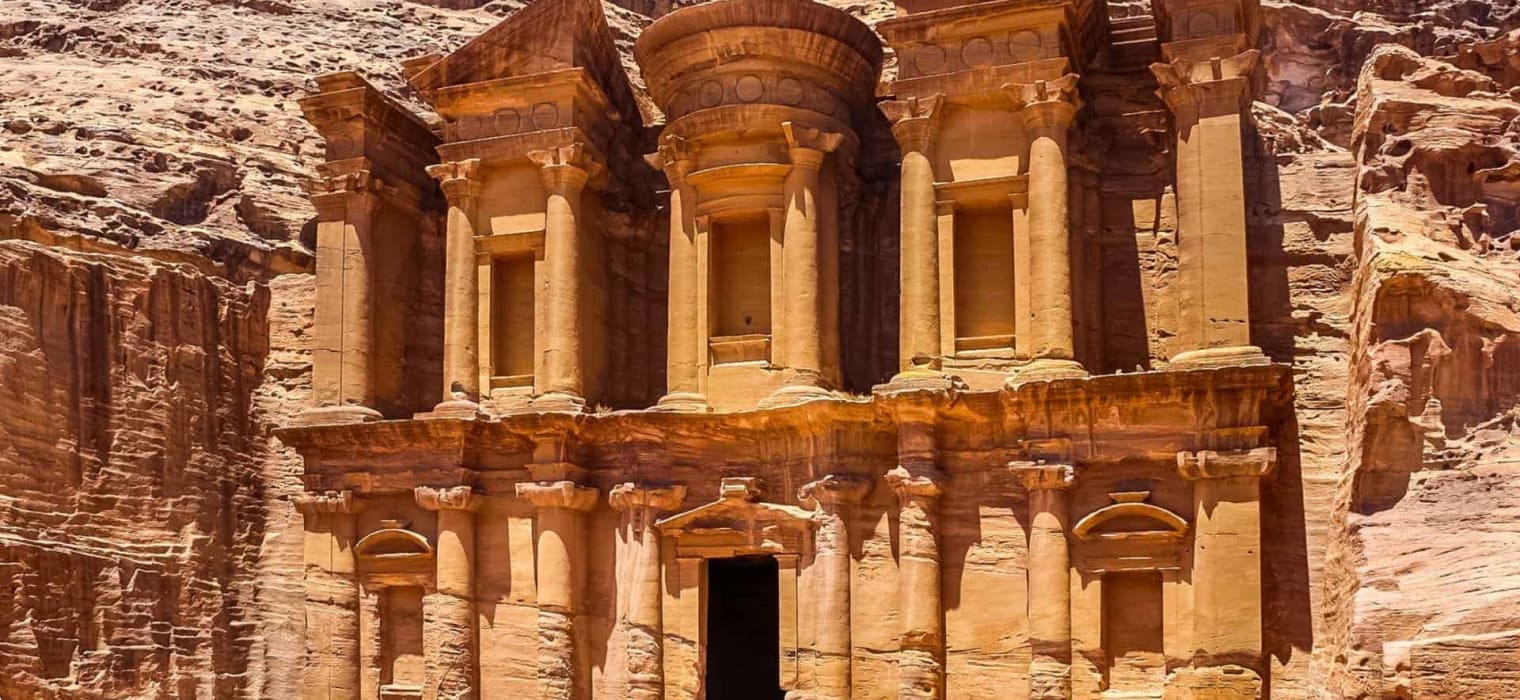
Understanding Petra.
Travelling through Jordan in the Middle East can be something like a trip through history as you explore the remains of cultures of the ancient world dating back thousands upon thousands of years. Certainly, these days a tour of Jordan is experienced in a little more style than the explorers of yesteryear but still, every step you take is in itself embarking on your own little adventure as you experience Jordan and its ancient sights. There are so many things to ponder, to question and to amaze in much the same way as Jordan has provided for any traveller before you. As you tour these biblical landmarks, and as you explore, occasionally remember that you are walking in the footsteps of the ancients, and a few of the more recent as well.
Pliny and Strabo, the ancient writers speak of the lost city of ancient Petra, the chief town in the country of the Nabataeans, three or fours days distant from Jericho, lying on a line, if drawn, from the Arabian Gulf to Babylon. Perhaps a little inaccurate for immediately locating the wondrous, rose city these days but enough to show that even the ancients knew well of Petra, its people and its position. The writers go on to say Petra is situated in a valley of about four kilometres in length, surrounded by desert yet watered by a river. Here, almost completely enclosed by what the writers call sheer precipices, much of the ancient trade passed through on its way to Arabia or to the Mediterranean.
Burckhardt’s journal
It was July 7th 1812, as recorded in the Swiss traveller Burckhardt’s journal on his journey from Damascus to Cairo, when he set out, before sunrise to continue his travels. As he moves over fertile plains and through oak woods and pleasant hills he notes the ruins he comes across, but seems to take little interest, failing to be impressed by the tumble.
The ruins that we passed here as well as all those before mentioned in the mountains of Belka, present no objects of interest. They consist of a few walls of dwelling houses, heaps of stones, the foundations of some public edifices, a few cisterns now filled up; there is nothing entire but it appears the mode of building was very solid, all the remains being formed of large stones. (Jean Louis Burckhardt, 1822)
After a few hours he and his guide enter a wide valley and soon come upon the ruins of Amman (ancient Philadelphia), ‘one of the most ancient of the cities recorded in Jewish history’. Little remained then of one of the ancient cities of the Decapolis. However, he was able to see the ruins of a very large theatre and a short section of a colonnaded street with eight columns still standing alongside the fragments of others. Along the river he walks on the ancient paving making his way over to examine an intact high-arched bridge that spans the water. Burckhardt records his archaeological tour of the roman ruins of this city. Reading this some two hundred years after his visit makes you wonder the feeling he experienced wandering that deserted but once magnificent Hellenistic and Roman city.
Burckhardt was travelling in the middle of summer and temperatures around the region could easily reach forty plus degrees. Yet, on he goes to encounter what he describes as enthusiasm and hospitality from families along the route while also running into some less than friendly horsemen. Fortunately, he is able to convince them that he is not actually a Damascene although his necessary disguise pointed to that particular origin. If it were true, he would have been a supporter of the Pasha of Damascus, and apparently, an enemy of certain of the nomadic tribes.
Over hills and through wadis they carry on with their journey as Burckhardt tells us
I was particularly desirous of visiting Wadi Musa, of the antiquities of which I had heard the country people speak in terms of great admiration; and from thence I had hoped to make the trip across the sand dune of the desert in a straight line to Cairo.
Passing the main village of the wadi containing between two and three hundred separate dwellings, our intrepid traveller begins to notice large, scattered, hewn blocks of stone. After a distance the valley narrows and the wadi begins to reveal its antiquities. It is at this point in his story that the German writer apologises for his all too brief examination and descriptions of such ancient monuments.
It seems likely from his description that Burckhardt first passed by the built tomb of the prophet Aaron ( Horoun ), supposedly the brother of Moses. It was here, to alleviate further suspicion from both the locals and his guide he pretended that he would make the necessary sacrifice of goat. This seemed to satisfy his guide so that they would be able to safely continue. Fortunately, such a sacrifice is no longer necessary for visitors to the wadi. Our writer then correctly predicts,
Future visitors may visit the spot . . . the inhabitants will become more accustomed to the researches of strangers and the antiquities of Wadi Musa will then be found to rank amongst the most curious remains of ancient art.
Over the next ten hours or so, Burckhardt was able to view the superb architectural remains that had remained hidden to European eyes for more than a thousand years. As he made his way forward he believed, as most first time visitors to Petra wrongly assume, that the valley was coming to a dead end, enclosed by only high vertical rock walls. Then when coming closer he realises there is
A chasm about fifteen or twenty feet in breadth, through which the rivulet flows westwards in winter; in summer its waters are lost in the sand and gravel before they reach the opening, which is called El Syk.
These days a visitor can walk the one kilometre through the Siq from the UNESCO site’s entrance and experience that same sensation of there being nothing but sheer rock faces in front.
Although no longer visible, at the time of Burckhardt’s visit the remnants of a paved road wound through the narrow passage. Nevertheless, if you are observant you may still be able to find the paths of rock-cut water channels in the cliff walls as well as niches that likely housed statues. Something else that no longer exists but was present those two hundred years ago was an arched bridge that spanned the chasm. At this point he makes the claim,
Nobody has ever been able to climb up the rocks to the bridge, which was therefore unanimously declared to be the work of the Djan, or evil spirit.
Your tour guide these days on a guided tour may be able to point out a few of the foundation stones for the ancient bridge so you too can wonder just how such an architectural feat was accomplished, without some intervention on the part of a spirit.
As the Siq suddenly widens he is confronted by a stunning view of the Khasneh (treasury), a structure that he called a mausoleum and commented,
The situation and beauty of which are calculated to make an extraordinary impression upon the traveller, after having transversed for nearly half an hour such a gloomy and almost subterraneous passage as I have described.
The Khasneh is carved into the cliff face, with its ornate decorations and huge Corinthian columns protected from millennia of eroding desert winds. Centred above the main entrance to the structure is a carved urn of classical style. It seems that it was this particular attribute that gave the building its better-known name of the Treasury, as legend had it that the vase contained gold and other precious items. Even at the time of Burckhardt’s visit small chips were visible in the stone of the urn where hopeful treasure hunters had taken aim with their muskets in an attempt to shatter the container to be showered by riches. Alas it is but a legend as the urn itself is solid being only a shape rather than a strongbox.
As you walk up the steps and into the vestibule you are probably taking the exact route as so many before you and indeed quite likely the same path the German traveller took in 1812. However, it is unlikely you will be as disappointed as he was when he found that the chambers inside were utterly empty. He had approached the building after having heard numerous stories of treasure and the view of the splendid doorways and the perfect state of preservation would have further excited his anticipation. Still, even after finding nothing remaining inside the Khasneh he could not help but be in awe of the workmanship and what it said of the ancient people of Petra.
It is one of the most elegant remains of antiquity existing in Syria; its state of preservation resembles that of a building recently finished . . . and great must have been the opulence of this now ancient city, which could dedicate such monuments to the memory of its rulers.
Probably the most recognisable of all the structures within ancient Petra, the Khasneh even featured in one of the films about the adventures of the world’s most well-known archaeologist, Dr Indiana Jones. Harrison Ford’s 1989 movie, Indiana Jones and the Last Crusade actually had particular scenes filmed on location in the city of Petra. In the archaeologist’s quest for the Holy Grail, he ventures along the fictional Valley of the Crescent Moon, modelled on the actual Siq and entrance to the fabled city. In the film’s final scenes, Indy, played by Harrison Ford, and his father, played by Sean Connery, emerge from the Siq to enter into the labyrinths (fictional) of the Treasury to continue their search. Unfortunately, the Hollywood director Steven Spielberg was a little careless in his handling of fact, as in reality the Khasneh is only a stunning facade with antechambers likely once used as a royal tomb.
You will notice, as Burckhardt did, that as you move further into the valley it begins to widen. On either side are rock-cut tombs that the Swiss traveller observed were each unique in design and decoration, varying greatly in not only size and shape but also in the way each had been decorated and finished off. He questioned how these sepulchres of the dead of Petra had been constructed
In some places, three sepulchres are excavated one over the other, and the side of the mountain is so perpendicular that it seems impossible to approach the uppermost, no path whatsoever being visible.
Continuing on into the valley he came upon the Nabatean theatre built during the first century CE. In his journal he describes this as being entirely cut from the rock and capable of accommodating an audience of 3000 spectators. Although for the most part correct, the exterior wall and the stage area have actually been constructed while the seating capacity would be more in the vicinity of 8000. When Burckhardt visited the remains of the theatre were filled with rubble that may have been why he wrongly estimated its size, but today it is cleared and it stands majestically to overlook the modern-day travellers on their way past to view the rest of the ancient city surrounded by the valley walls.
There are no remains of columns near the theatre. One hundred and fifty paces further, the rocks open still father, and I issued upon a plain two hundred and fifty or three hundred yards across, bordered by heights of more gradual ascent than before. Here the ground is covered with heaps of hewn stones, foundations of buildings, fragments of columns, and vestiges of paved streets; all clearly indicating that a large ancient city once existed here.
For travellers such as Burckhardt in the 19 th century and even later visitors to any ancient site, the problem always remained as to the chronology. These days people, both locals and travellers alike are far better informed of the different histories but at the time Burckhardt undertook his journey, little would have been known of the origins of most if not all the ancient monuments. Roman roads attributed to the later Muslims as a way to facilitate the Haj (pilgrimage), the reconsecration of tombs by successive groups to establish a popular belief in continuity for a region or any such ‘reinterpretation’ would make any sorting out of the chronology a difficult matter.
Near the west end of Wadi Musa are the remains of a stately edifice, of which part of the wall is still standing; the inhabitants call it Kaszr Bent Faraoun (Arabic), of the Palace of the Pharaohs daughter.
Certainly, Egypt and its great pyramids lie only some 300 or so kilometres distant but the dating of the structures of Petra make it unlikely that this 1 st century CE construction was for an Egyptian princess. The other monuments nearby, even when the unique attributes of each is taken into account, hint more to a local inhabitant having been interred in the so-called palace.
Burckhardt’s tour of Petra was almost at an end as the suspicions of his guide continued to grow. Whether he had seen enough of the Nabataean city or time would not have allowed further exploration, it is difficult to say but the day was drawing to its close. It seems he felt it sensible to make his way out of the valley rather than risk closer examination of the large tomb and the loss of his prized journal as a possible book of spells.
It is very unfortunate for European travellers that the idea of treasures being hidden in ancient edifices is so strongly rooted in the minds of the Arabs and Turks. When he saw me turn out of the footpath towards the Kaszr, he exclaimed: ‘I see now clearly that you are an infidel, who have some particular business amongst the ruins of your forefathers . . . and I did not think it prudent to irritate him further by too close an inspection of the palace, as it might have led him to declare that I had found some treasures which might have led to a search of my person and to the detection of my journal.
The Swiss traveller left the valley after quickly sacrificing a goat at the tomb of Aaron, his alleged purpose for the visit to the wadi, with the ruins of Petra just supposedly being an entertaining sidetrack. At this point in time, he was convinced he had toured the ruins of Petra. His reading of certain of the classical authors had provided the evidence he needed for his conclusion. One of the most telling hints was the name itself of the famed city Petra that comes from the Greek meaning rock. In addition, Strabo (63BCE-24CE) had spoken of this capital of the Nabataeans,
On ground in general even and level but guarded all around by rock, outside precipitous and abrupt but inside having abundant springs for drawing water.
It has now been well over two hundred years since Burckhardt journeyed to the ruined city of Petra, and in the interim thousands of researchers and millions of tourists have visited the site. Of course, far more is now known of the Nabataean capital, but still, there remain many questions surrounding the ancient history of this enigmatic rose-red city. Pottery found there puts the beginning of occupation sometime around 5000 years ago but it is more than probable people lived in the wadi, with its treasured water sources a haven in the surrounding desert from much earlier. Archaeologists though have found direct stylistic connections to the Neolithic peoples of Jericho in the nearby Jordan Valley.
The first written evidence that may relate to the Petra region comes from references in the bible to the people, the Edomites, having their land taken from them by the Nabataeans. Archaeologists have found the remains of an Edomite village on top of the cliffs adding further credence to the idea of the region of biblical landmarks. It seems that this industrious new group from the desert arrived sometime in the 4th century BCE to displace the area’s former inhabitants and to settle on the valley’s floor. The reasons behind this ‘settling down’ by a nomadic desert people is not clear although it is seems likely they realised the wealth and prosperity to be gained from the area.
For thousands of years there had been a continual growth in internal and international trade and an expansion of the trade networks. From the Indian Ocean to the Red Sea, numerous trade routes linking Egypt with Mesopotamia and Arabia with Europe crossed the territories of the Nabataeans. It was thus then a matter of establishing control over these roads and a levying of taxes on the traders. Petra, easily defended with its reliable water sources in a parched region, would seem the obvious choice. Once the decision was made to move into Petra, the city grew rapidly as the territories and routes controlled by the Nabataeans expanded. At its peak it is believed they exerted their influence from Damascus to the Sinai Peninsula and on into the eastern desert regions of the Middle East we know today.
But the question remains why, from among a number of desert tribes existing at the same time, were the Nabataeans able to maintain their superiority? An interesting and plausible theory is that they were able to overcome challenges to their monopoly by having a better-equipped mobile cavalry. It is believed the Nabataeans invented a saddle for their camel-mounted fighters that allowed them to go into battle with both hands free rather than having a need to balance on their hilly steeds. There are even depictions of riders on their coins with their hands held almost boastfully over their heads as their camels surged forward.
As dominance of the Roman Empire rose and its power extended, the Nabataeans held steadfastly to their independence, even apparently in 63BCE, convincing Pompey, the Roman general to allow this autonomy to continue. The pressure though continued and finally in 106CE the Nabataeans gave in with Petra incorporated into a Roman province.
Strangely, archaeological exploration within the wadi has uncovered little in the way of artefacts for domestic use although scraps of a very fine and delicate pottery were found throughout the city. Yet the buildings on the floor of the hidden valley and the tombs spread along the surrounding cliffs continue to excite travellers on their tour of Jordan. Is it the beauty of the remains cut from the rose-coloured stone, the mystery that surrounds or a combination of the two?
Today if you carefully examine the area, you would be able to count something in the vicinity of 5000 tombs, ranging in size from small caves with a door and decorative frieze to the huge Royal burial vaults. It is almost as though Petra is or was something like a vast necropolis, a city for the dead, but all the tombs are on the periphery dotting the faces of sandstone cliffs and rugged mountains. The open area between these was the landscape for the life of the city with a theatre, a temple, bathhouses, shops, public buildings and houses. All of these have fallen into ruin but what does remain provides the visitor with glimpses of a now ancient wonder, the once splendid capital of the Nabataeans.
When the Roman administration later moved to its new centre of Boszra, the desert tribes gradually reclaimed the wadiand its structures, with the tombs and occasionally a cistern, used as houses or as storerooms. In fact, it was not until 1986 that the last of the Bedouin camp was moved elsewhere by the Jordanian Government as the value of Petra as a tourist drawcard became even more apparent.
European visitors had begun to arrive soon after the publication of Burckhardt’s journal in 1822 describing his day tour to the Petra basin. One of these travellers was the British graphic artist David Roberts. His painted views are somewhat romanticised but can provide a pictorial guide through the monuments of Petra in the early 19 th century.
Burckhardt left Petra, after a day’s exploration, as the sun quickly set. It would not have been a simple task to make his way through the darkened Siq and out of the wadi but he did this and continued his journey onto Cairo. The German traveller died from a severe bout of dysentery a few years later in that city leaving behind the detailed journal of his travels to Petra, ‘a rose-red city half as old as time.’
I was without protection in the midst of a desert where no traveller had ever before seen. And a close examination of these works of the infidels, as they are called would have excited suspicions that I was a magician. (Jean Louis Burckhardt, 1822)
Odyssey Traveller has a Jordan tour for small groups of mature and senior travellers typically twice a year that includes the ancient sights of Petra. Your small group tour of Jordan starts in Amman, this group tour with a local tour guide makes its way over several days to Southern Jordan to visit this highlight of any guided tour, Petra. The program is timed to run after the small group tour of Egypt.
Selected small group package Tours
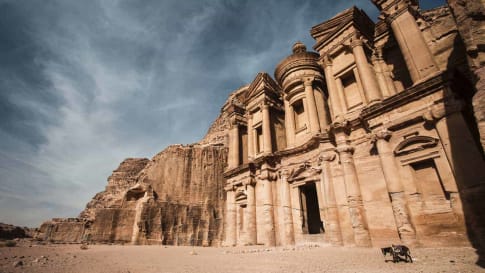
9 days
Jan, OctAncient History of Jordan | Escorted Small Group Tour
Visiting Jordan
Explore Jordan, visiting its capital city, Amman Jordan, the ancient Desert Castles, Petra and the Dead Sea on a small group package tour for mature and senior travellers travelling as a couple or Solo.
From A$6,750 AUD
View Tour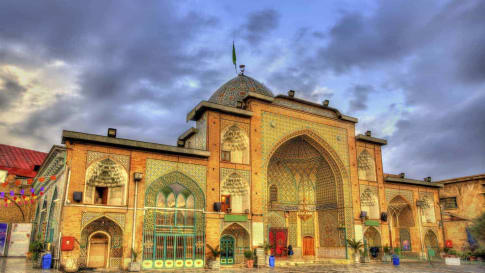
17 days
Sep, Nov, AprIran Culture and History Escorted Small Group Tour for seniors
Visiting Iran
Unlike its neighbours to the west and northwest, Iran had not adopted Christianity and it was the explosive spread of Islam and its ready adoption, without the Arabic language or customs, which helped unite the culture and greatly enrich Persian heritage. This small group tour program includes the great cities of Iran, historic sites, mosques, gardens, bazaars and teahouses for couples and solo travellers.
From A$11,825 AUD
View Tour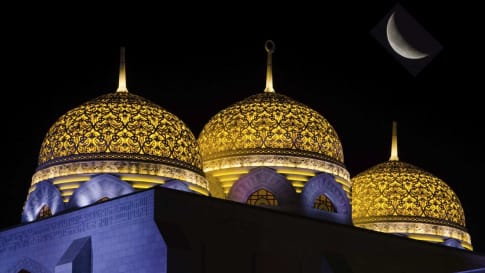
13 days
Oct, SepDiscover Oman
Visiting Oman
The Sultanate of Oman is a country of diverse natural beauties and fascinating human history. Oman boasts medieval forts and watchtowers, Bedouin villages, spectacular fjords, bustling markets, date palm plantations, and sand dunes.
From A$11,595 AUD
View Tour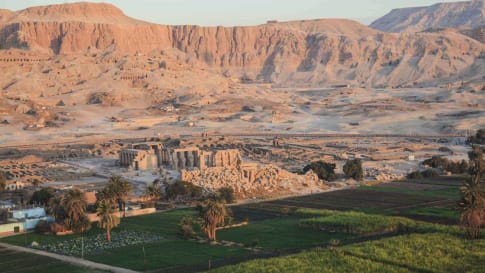
18 days
Nov, JanEgypt tour: escorted small group history & cultural tour of Egypt
Visiting Egypt
Our small group program for senior and mature couples and solo travelers takes us to contemporary feats such as the Aswan Dam and also to current crucibles of the Egyptian experience such as Tahrir Square. Proof, were it needed, that Egypt’s role as the pivot of civilisation is far from ended. There is the opportunity to visit our Morocco, Jordan or Iran tours before embarking on this tour of Egypt.
From A$12,950 AUD
View TourArticles of interest
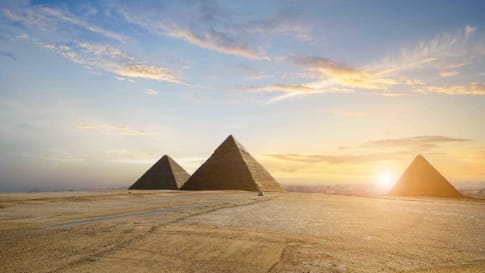
Discover Egypt with ten great books
Discover Egypt with ten great books Egypt captures the imagination and heart of us all. It is often our introduction to ancient history, and the mysteries of the pyramids and myths of pharaohs remain alive…

Egyptian linen treasures
Egyptian linen treasures Egypt has long held a place in the imagination of curious travellers. Many of us were introduced to the stories of pyramids, pharaohs and buried treasure as children, and since then, books…

Questions about Egypt for senior travellers.
A small group tour to explore what remains of ancient Egypt. Visit Cairo, Luxor and the valley of the King and Queen plus Alexandria. A tour for senior and mature travellers.
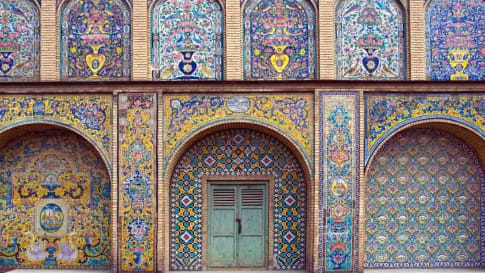
10 books about Iran
Ten books to read about Iran Throughout history, Iran’s position in the centre of the famous Silk Road has seen it crisscrossed by travellers, traders and armies. In more recent times, its rich oil resources…
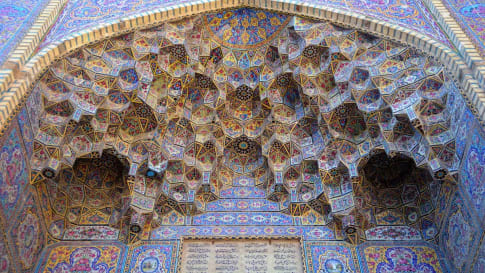
Beauty and Artistry in Iran: The Persian Garden and Persian Mosaic Tiles
Guide to Persian Mosaics and Gardens | Small group tours Iran Beauty and artistry can be seen everywhere in Iran, and its philosophy and religious beliefs are reflected in the country’s public and private spaces.…
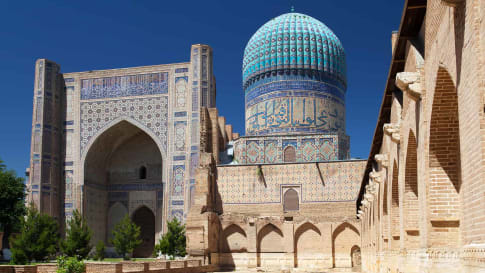
Elements of Mosque Architecture
The word "mosque" often brings to mind not this simple prayer space, but the ornately decorated monuments built by powerful Islamic rulers.
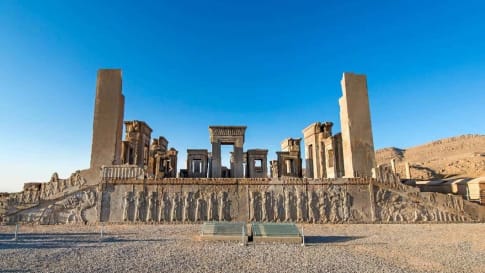
Highlights of Iran | Persepolis
Highlights of Iran | Persepolis Persepolis was once the capital of an empire that ruled a territory that covered Egypt to India. It is one of the wonders of the ancient world. The Achaemenid Kings…
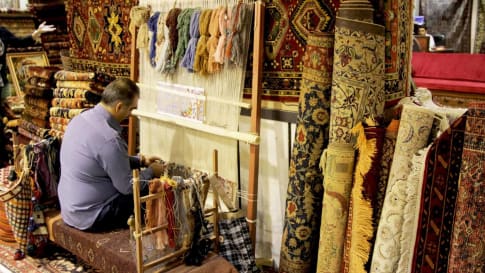
History of Persian Carpets
History of Persian Carpets: From the Nomadic Tribes of Iran to Europe’s Richest | Small group tours Iran In addition to its gardens and mosaic tiles, Iran (formerly Persia) is famous the world over for…
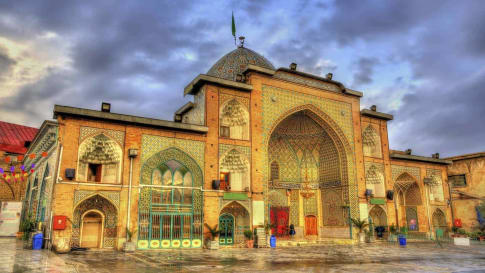
The history and monuments of ancient Iran
Visiting Iran | Small group tours Iran Women visit a carpet store in Shiraz, Iran. Throughout history, Iran’s position in the centre of the famous Silk Road has seen it crisscrossed by travellers, traders and…
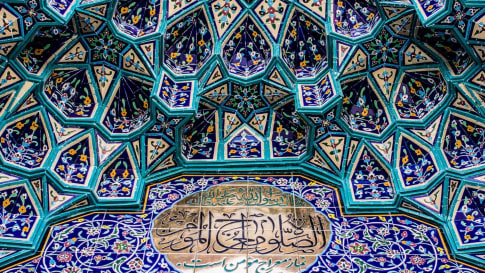
The Legacy of the Safavids in Persia
Legacies of Persia’s Safavid Dynasty | Small group tours Iran Modern-day Iran is full of tiled architectural gems and of immense artistry, textiles and culture. But this is all thanks to its to the legacy…

Jordan: A Definitive Guide
A small group tour of Jordan for senior and mature travellers explores this ancient civilisation with visits to Petra, Wadi Rum, Madaba and other places on this tour which is often paired with Odyssey's Egypt tour.

Madaba, Jordan
Madaba, Jordan Madaba is a town in west central Jordan situated on a highland plain 760 metres above sea level, 32 kilometres south of Amman. It is famous today in historical cartography for the Madaba…

Mount Nebo, Jordan
Mount Nebo is a revered holy site. According to the Hebrew Scriptures, Moses, who led the Israelites in an exodus out of Egypt across the desert for 40 years.
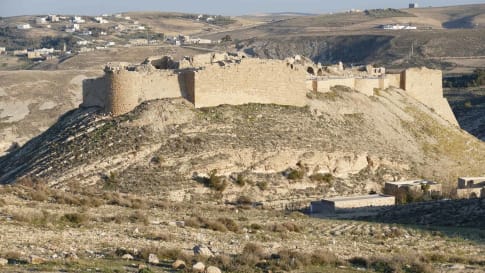
Shobak Castle, Jordan
Shobak Castle in Jordan is part of the tour itinerary to visit Jordan for a small group tour for mature and senior travellers with an interest in contemporary and the ancient history of the Middle East. Join as a couple or solo traveller on this package tour offered each year.

The Dead Sea
The Dead Sea The Dead Sea is a landlocked salt lake bordered by Jordan to the east and Israel to the west. It is located 430.5 metres (1,412 feet) below sea level in the Jordan…
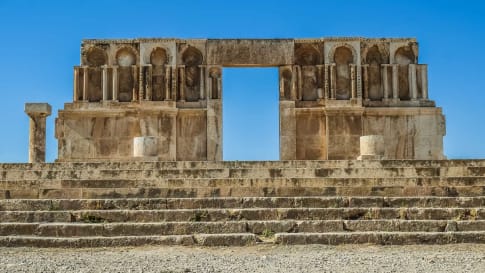
Amman, Jordan
Amman, Jordan Amman is the capital and largest city of Jordan. It is the seat of government and the city where the king resides, and among the most modernised Arab cities. Built on the rolling…


